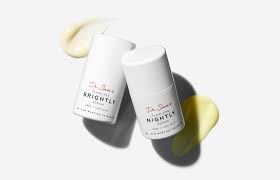
Can You Use Azelaic Acid for More Than Six Months?
When it comes to using skincare ingredients, it is known that you must use them for a considerable amount of time before you reap the rewards. This is the general thought, but some are understandably unsure due to how harsh certain ingredients can affect the skin, especially if the ingredient we are talking about, is an exfoliating acid. Azelaic acid, for example, is often mistaken as working in a similar way as other acids, such as AHAs, glycolic acid and BHAs, such as salicylic acid.
If you are unsure of how azelaic acid works on the skin, this next part is for you. If you are already glued up with all thing’s skincare, you can skip to the next part to find out more about using azelaic acid for more than six months.
What is azelaic acid and how does it benefit the skin?
Azelaic acid is an acid that can provide exfoliation for the skin. You’ll find it is naturally occurring in the body made from yeast. When formulated into skincare products the ingredient is derived from cereals and grains ensuring it can slough away the build-up of dead skin cells, dirt, and bacteria that can sit on the surface of the skin. This can then lead to a flare-up in breakouts, areas of flaky skin, prominent signs of ageing, such as fine lines and wrinkles, and a dull looking complexion. Here is a little more detail about the benefits this clever acid can provide for the skin.
Azelaic acid can improve the skin tone, whether it’s sun damage, acne scarring, and post inflammation hyperpigmentation.
Azelaic acid fights acne with its antibacterial properties, all of which can target P. acnes, the bacteria found on the skin surface and develop into breakouts, such as spots and blackheads.
Azelaic acid is gentle enough to treat rosacea, known for being one of the least irritating acids to use on the skin as it can unclog the pores and reduce inflammation without being too harsh.
Azelaic acid is considered one ingredient that is safe to use during pregnancy, just ensure you have double check with your doctor or midwife before introducing anything into your routine.
If you wanted to find out more about azelaic acid and how it benefits the skin, there is a dedicated blog post for you to check out.
How long can I use azelaic acid?
How long you can use azelaic acid is dependent on the formula, your skin condition, and the reasons behind introducing the ingredient in the first place.
Once you have started using azelaic acid in your routine, you’ll often find your skin will appear to worsen after 2 weeks. This is a perfectly normal reaction, known as purging, and can last up to 3 to 4 weeks. It is simply a case of the acid working its way into the lower layers of the skin and unclogging the pores of dirt, sebum, and bacteria build-up. All this “gunk” is then pushed the surface resulting in breakout of blemishes, blackheads, whiteheads, and other spots. By the time 4 weeks has passed, you’ll your skin will rebalance, and you’ll have a notable improvement on your skin’s clarity. Continue to use this acid in your daily routine and once you reach twelve weeks, you’ll find the acid has delivered optimal results to your complexion.
It’s advisable that when using azelaic acid you need to ensure your skin is happy with the application. Although the acid is gentle, everyone’s skin is different and for peace of mind it is best to perform a patch test for 24 hours before using the ingredient on the face.
Can I use azelaic acid for years?
Yes, it is understood that azelaic acid can be used for years by those who benefit from it in their routine. There are many products enriched with azelaic acid, from serums, exfoliating toners, and topical skin treatments. These all contain active and effective levels of the acid and are often available over the counter, if it is something more potent you are after, there are specialist skin treatments available. Professional facials and chemical peels use high percentages of azelaic acid which should not be used on a daily basis. Instead to you should have a treatment like the ones mentioned about 3 to 4 times a year depending on the health of your skin.
You’ll find that once your skin has built a tolerance for azelaic acid, you can continue to use it for years to come to help keep your skin’s clarity, with an even skin tone and complexion that is full of youthful bounce.
Is it okay to use azelaic acid every day?
Yes, it is perfectly safe to use azelaic acid every day, as long as your skin shows no signs of irritation or reactions. If you have a dry or sensitive skin type that is prone to react to certain ingredients, try introducing azelaic acid into your routine slower. Many choose to apply it on alternative days to build the skin’s tolerance without any unwanted reactions. If you wanted to be extra cautious you can also decide to apply your azelaic acid product in the evening. Unlike most acids, azelaic acid doesn’t increase the skin’s sensitivity to the sun, however with newly exfoliated skin, the skin cells are more likely to become damaged, which is why it is vital you apply a daily SPF of 30 and above. You’ll also find that when applied to the skin during your evening routine the acid is able to work uninterrupted from any exposure to free radicals, such as pollution, central heating, UV light, and other environmental aggressors, leaving you to catch your beauty sleep and waking up with glowing skin.
How often can I use azelaic acid?
You can use azelaic acid daily, twice a day if your skin remains happy and healthy. If you find there is a slight hint of irritation, dryness, redness, or discomfort to the skin, you must stop using the product and seek the help from a doctor or dermatologist.
If you wanted to know more about azelaic acid and find out what it’s good for, check out our dedicated blog post.
There you have a little insight into azelaic acid and using it, don’t forget you can follow us on Instagram if you have any further questions.


